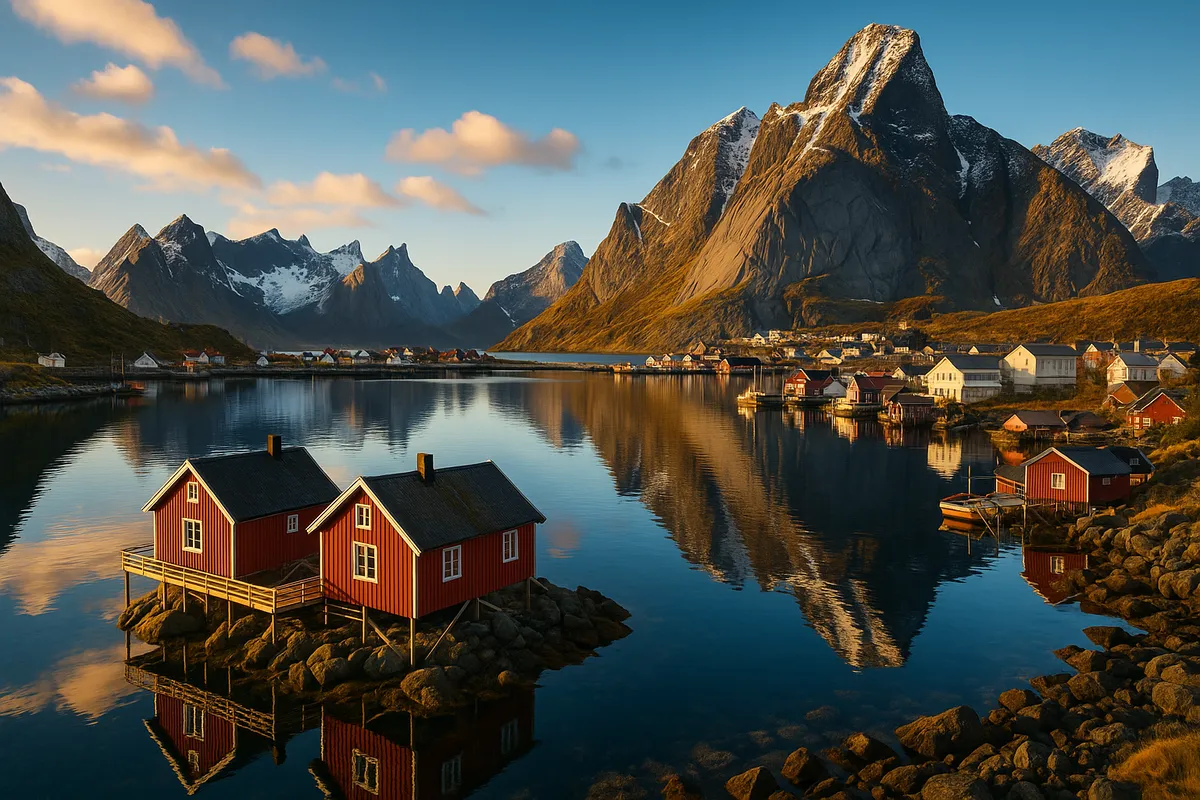Norway imposes tourist tax due to overtourism
- Monday, Jun 09, 2025, 15:52 (GMT+7)
Norway imposes tourist tax due to overtourism
Norway officially passed a law on 05/06/2025 allowing the implementation of a tourism tax, marking a significant turning point in the country’s strategy to regulate tourism in a sustainable direction. The initial tax rate is set at 3 percent of accommodation costs, applied at the discretion of individual municipalities. With flexible adjustment according to season and locality, this policy is designed to address tourist overcrowding at popular destinations while generating resources to improve infrastructure and protect local living environments.
In 2024, Norway recorded more than 38.6 million overnight stays, with over 12 million from international visitors. The number of tourists increased by 4.2 percent compared to the previous year, heavily concentrated in areas such as Lofoten, Tromsø, and Geirangerfjord. This caused severe pressure on public infrastructure and environmental resources. Shortages of parking lots, public toilets, traffic congestion, and waste pollution were frequently reported in international media and Nordic travel forums. In many cases, tourists had no choice but to relieve themselves in unregulated forest areas, leading to rising tension between visitors and local residents.
The new law grants local councils the authority to implement the tax if they can prove that local infrastructure has exceeded its carrying capacity. At the same time, they must present a clear and transparent plan for the use of revenue, prioritizing projects that directly benefit tourists and improve local quality of life. The declared goal is to reinvest in communities and the environment instead of allocating funds to unrelated public budgets.
Unlike other tourism tax models previously adopted across Europe, which mostly followed a fixed amount per person, Norway chose a percentage-based system tied to accommodation expenses. This approach allows more flexibility across different market segments and better adapts to seasonal market fluctuations. Local authorities can increase the tax rate during peak travel seasons and reduce it when pressure on infrastructure is lower. This helps avoid imposing an unreasonable burden on budget travelers and encourages off-season tourism.
The international travel community responded positively overall. Data from a recent EuroTravel Insights survey revealed that more than 68 percent of international tourists are willing to pay an additional fee if the funds are transparently used and bring clear community benefits. On major review forums like Lonely Planet and Reddit, many travelers shared that they do not mind contributing financially if they see tangible improvements in environmental protection and travel experiences. The key condition is that all revenues must be publicly disclosed, easy to track, and not misused for administrative overhead.
The global tourism industry has repeatedly encountered overtourism over the past decade. Famous destinations such as Venice, Barcelona, and Dubrovnik have had to implement strict measures including entry fees, daily visitor caps, and restrictions on large cruise ships entering central ports. However, most of these policies were reactive, implemented under public pressure or following crises. Norway has become one of the few countries to proactively prevent issues through fiscal mechanisms, involving local governments and private sector stakeholders from the outset in a structured long-term roadmap.
From the perspective of consumer behavior, travelers aged 18 to 35 now make up the largest segment of international visitors to Norway. This demographic is showing a clear shift in values, favoring sustainable and personalized experiences over mass-market travel. A study published by Skift Research in early 2025 found that more than 70 percent of travelers in this age group care about the environmental footprint of their journeys, including carbon emissions, community impact, and responsible spending. This is a favorable condition for Norway’s tourism tax policy as most tourists in this group are already predisposed to support responsible travel if policies are implemented in a transparent and convincing manner.
It should also be noted that a 3 percent tax, although modest, can generate substantial revenue on a national scale. With over 12 million international tourists staying overnight annually, total revenue from the tax could exceed 500 million in local currency if widely implemented. This fund, if reinvested into smart parking, ecological sanitation systems, electric bus routes, or entrance control at heritage sites, could significantly improve both the quality of tourism and reduce social tensions.
The key issue lies in the transparent management of collected funds. Organizations such as the Norwegian Environmental Fund, the Green Tourism Federation, and the Council of Tourism Cities have proposed quarterly public financial reporting with independent oversight from both community representatives and business stakeholders. The central government is also responsible for issuing regulatory guidelines to ensure unified spending standards and avoid fragmented or misguided use of funds at the local level.
Some of Norway’s major cruise ship ports, including Bergen, Stavanger, and Tromsø, are preparing to implement specialized tax models for cruise tourism. This move aims to address the problem of cruise passengers making short visits while placing a disproportionate burden on local infrastructure. It is a significant new step since few European countries have boldly enacted fiscal policies specifically targeting this segment. According to Cruise Norway, over 350 cruise ship calls occurred in 2024, with each ship carrying an average of 2500 passengers, generating immense pressure on transport systems and waste treatment facilities.
Beyond managing visitor volume, the tax policy also serves to reshape Norway’s development model. Regions such as Hardanger, Dovrefjell, and Alta are testing seasonal and spatial dispersal strategies to avoid overconcentration in famous hotspots. Local governments are working with tour operators to promote lesser-known routes that emphasize cultural heritage and pristine nature. In this context, the tourism tax is not just a financial tool but also a strategic instrument to redirect visitor flows according to long-term development objectives.
It is worth highlighting that Norway did not introduce this policy through confrontation but via consensus and continuous consultation. Authorities organized open meetings with residents, businesses, and environmental groups to listen to feedback, adjust plans flexibly, and continuously update their implementation roadmap. The central philosophy is not to limit tourism, but to redefine how tourism takes place, fewer visitors but deeper experiences, slower travel but better quality, more kindness and more responsibility.
At an international level, Norway’s tourism tax policy is setting a new benchmark. Instead of waiting to react to crises, the government intervenes early with clearly defined goals backed by data. The lesson for developing countries, including Vietnam, is the need to identify potential pressure points early, assess the carrying capacity of infrastructure, and formulate control strategies before problems escalate. Delays will only increase the cost of recovery and erode visitor trust.
The global tourism sector is now confronting a broader challenge of transitioning from rapid growth to sustainable development. In that context, policy tools such as tourism taxes are not merely financial but reflect deeper strategic vision. With a transparent, clear, and adaptive approach, Norway is demonstrating that economic growth and environmental conservation are not mutually exclusive if managed by capable governance and a community that shares responsibility.

 CHECKIN.VN
CHECKIN.VN








Share on